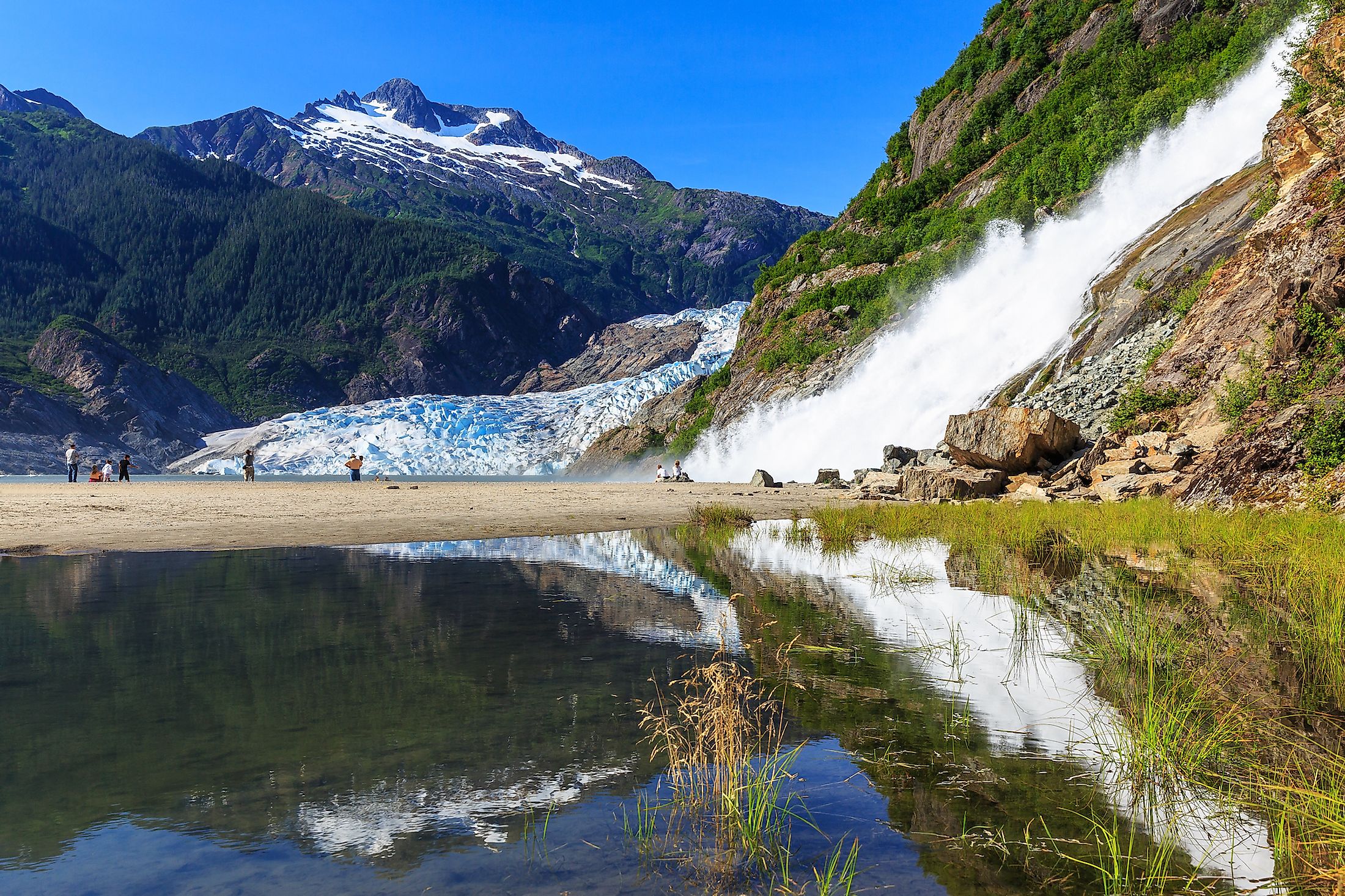
Mendenhall Glacier And Ice Caves
The Mendenhall Glacier is a natural wonder located in the Mendenhall Valley in Juneau, Alaska. The 19 km long ice sheet is one of the world’s thickest glaciers, measuring 1,477 m, and is one of Juneau Icefield’s 38 major glaciers. The icefield spans about 3,885 km2 from Teku River to Skagway. The glacier contains ice caves, mainly hollow glaciers where water flows over frozen blue ice. The ice caves range in size from large hollow tunnels to small caves where one can barely squeeze through. The Mendenhall Glacier is a protected area within the Tongass National Forest.
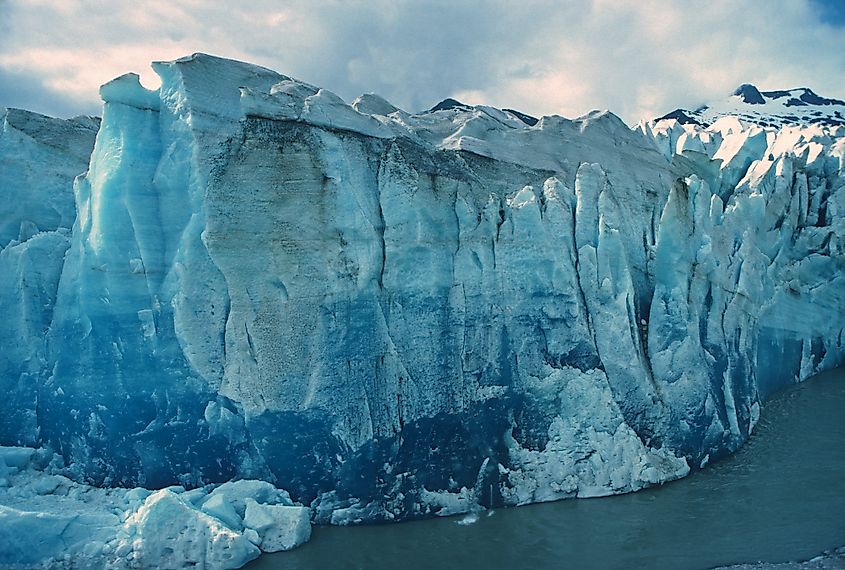
Names
The Mendenhall Glacier has been known by several names, both in the past and present. The area was originally known as “Sitaantaagu,” meaning “the Glacier Behind the Town.” The Native Tlingit Indians also referred to the glacier as “Aak’wtaaksit,” loosely translating to “the Glacier Behind the Little Lake.” When John Muir, a naturalist, visited the glacier in 1879, he named it Auk (Auke) Glacier. In 1891, the glacier was renamed “Mendenhall” in honor of Thomas Corwin Mendenhall, who worked for the US Coast and Geodetic Survey and helped to demarcate the Alaska-Canada boundary.
Location
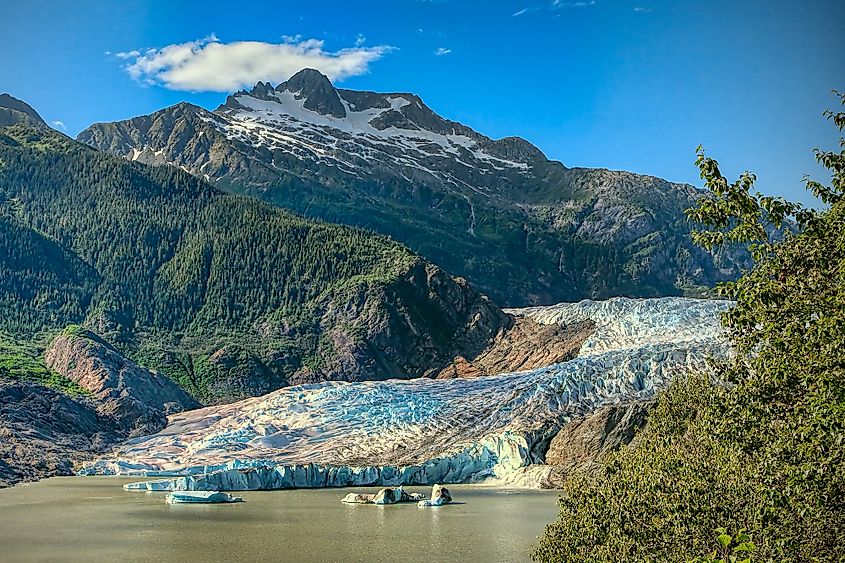
The Mendenhall Glacier is located in the Mendenhall Valley in southeastern Alaska. It is a 19 km long glacier situated within the Coast Range, about 19 km from Juneau. The glacier is located to the south of the Admiralty Island National Monument and north of the Diamond Park and Juneau International Airport. The Mendenhall Glacier is protected as part of Mendenhall Glacier Recreational Area within the Tongass National Forest. Adjacent to the glacier is a 67 m deep Mendenhall Lake that began forming in the early 1900s. The glacier is accessible by highway all year round
Description
Mendenhall Glacier is located in the Mendenhall Valley. The retreating glacier is 2.4 km wide and over 27.4 m high at the terminus. A proglacial lake exists on the Mendenhall Valley’s northern end. It is one of the 38 major glaciers forming the Juneau Icefield and flows from the southern half of the large icefield. Mendenhall Glacier is a Little Ice Age relic and an example of retreating ice, receding by about 30 to 45 m annually. It displays glacier moraine that exposes remnants of forest buried underneath the ice a long time ago.
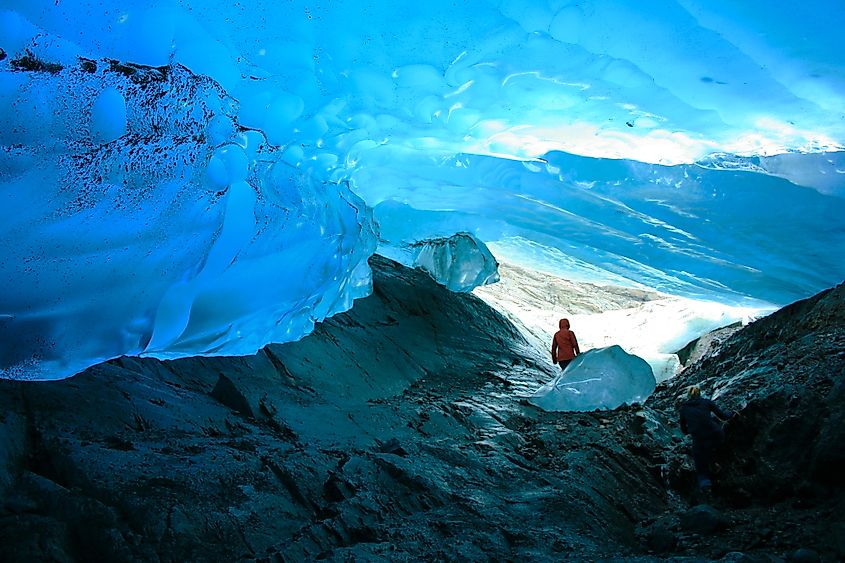
The Mendenhall Glacier contains fascinating blue ice caves formed as water passes between the ice and the rocks. The stunning blue color of the ice caves results from air squeezing from original ice and snow, causing the ice to absorb all the colors except blue. The blue wavelength's transmission is responsible for the blue appearance. The melting water from the glacier runs through and under the glacier and regularly carving new caves. Because of changing weather patterns, some caves have collapsed over time. The caves vary in size, with some being large tunnels that allow for easy passage, while others are small and almost impossible for people to access the inside.
Effects Of Climate Change
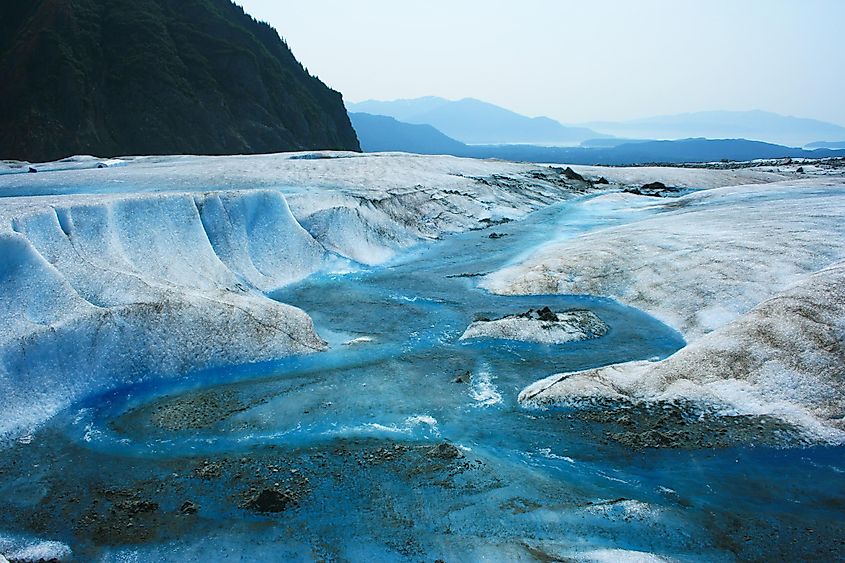
Sadly, the Mendenhall Glacier, like other Juneau glaciers, is retreating at an alarming rate. This specific glacier has retreated by about 3.2 km in the last six decades compared to only 0.5 miles between 1500 and 1950. The receding glacier has had an impact on the ice caves, with most of the caves collapsing. The receding glacier is caused by climate change in Southeast Alaska. According to the US Forest Service, the glacier itself is responsible for climate change.
Since most communities rely on the glacier area for freshwater, they may be forced to look for an alternative water source when the glacier is gone. However, the retreating ice led to the formation of Mendenhall Lake, whose size is increasing as the glacier recedes. The lake hosts unique flora and fauna, including fish like salmon, char, and Dolly Varden.











